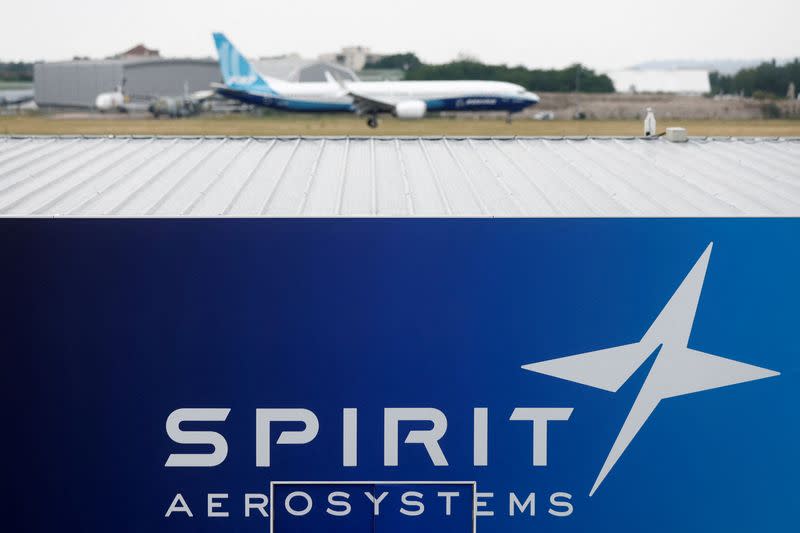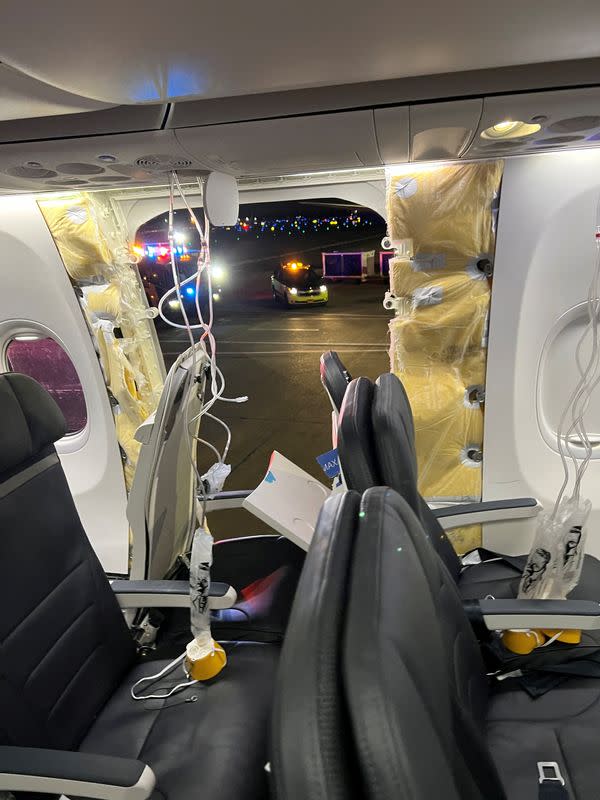Spirit Aero made blowout part but Boeing has key role -sources
By Valerie Insinna, Tim Hepher and David Shepardson
WASHINGTON (Reuters) - Aerospace supplier Spirit AeroSystems manufactured and initially installed the fuselage part on a brand-new Boeing 737 Max 9 jet that suffered a blowout on Friday, but Boeing also has a key role in the usual completion process, sources told Reuters.
Because of a complex, two-tier installation process, investigators are expected to examine whether any flaws occurred at Spirit's giant fuselage plant in Wichita, Kansas, or at the Boeing factory outside Seattle, the sources said.
Regulators on Saturday grounded most Boeing 737 MAX 9s for safety checks after the eight-week-old Alaska Airlines plane, carrying 171 passengers and six crew, lost a door-replacement panel during a U.S. flight, before landing safely with a gaping hole in its side on Friday night.
The 737 MAX 9, currently Boeing's largest single-aisle, seating up to 220 people, includes an optional extra door to allow for the approved number of evacuation paths whenever carriers opt to install the maximum number of seats.
But most airlines using the jet have chosen a looser layout based on a smaller number of seats and do not need the surplus door, which adds weight and reduces flexibility in the cabin. Instead the door is deactivated before delivery, using a "plug."
Other optional doors or fill-in replacement structures were also offered on a predecessor model, the 737-900ER.
As part of the production process, Spirit builds fuselages for 737s and sends them by train with the special door assembly “semi-rigged,” one of the people said.
“They are fitted but not completed," the person said.
At its Renton, Washington, plant, Boeing typically removes the pop-out, or non-functioning, door and uses the gap to load interiors. Then, the part is put back and the installation in completed. Finally, the hull is pressurized to 150% to make sure everything is working correctly, the person said.
The process means that finding out where any flaw was introduced during assembly may not be clear-cut, said the sources, who asked not to be named as details of the probe are confidential.
Door plugs have been used to adapt aircraft and offer flexible layouts across the industry for years.
The investigation will include structural experts to see whether design or manufacturing played a role in the accident.
"The assumption is that it was installed or rigged incorrectly,” one of the sources said.
Boeing and Spirit declined comment on industrial processes.
(Reporting by Valerie Insinna, Tim Hepher and David Shepardson; Editing by Chris Reese and Leslie Adler)

 Yahoo Finance
Yahoo Finance 

